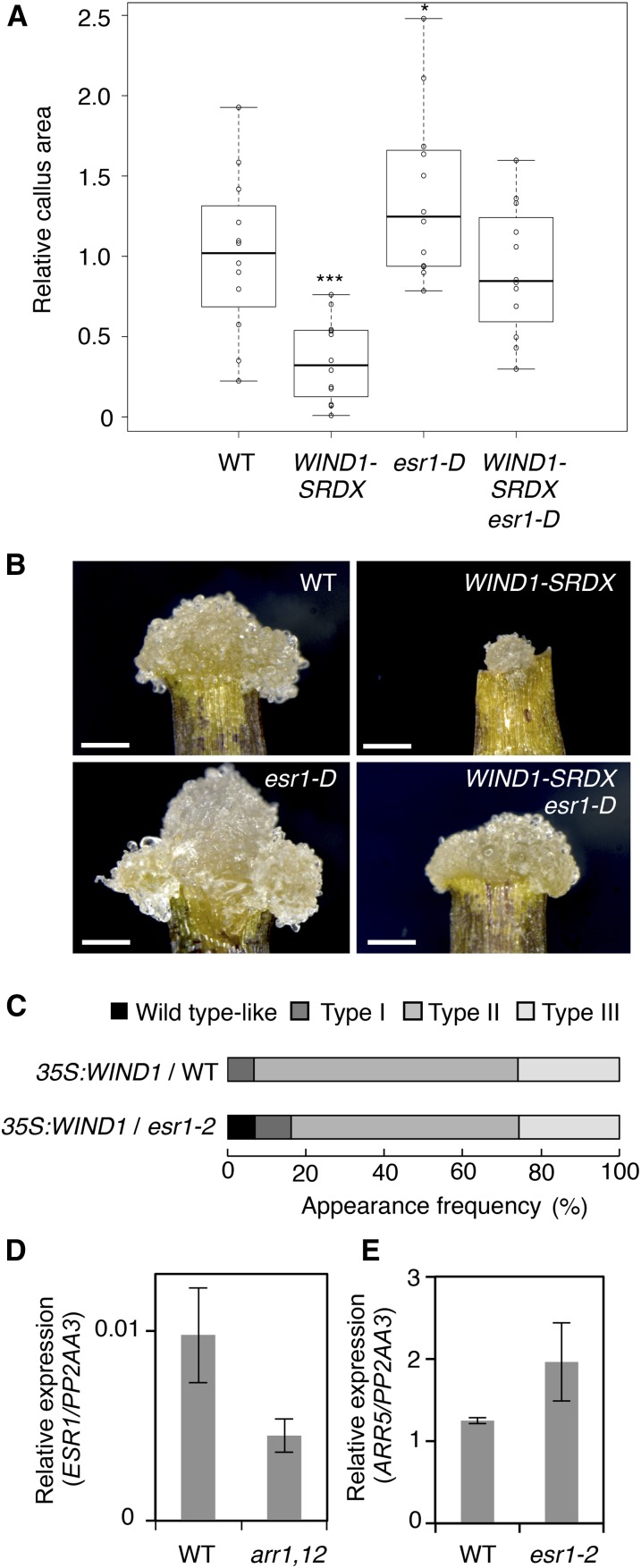Figure 4.
ESR1 Functions Downstream of WIND1 in Wound-Induced Callus Formation.
(A) Callus formation at wound sites of wild-type, ProWIND1:WIND1-SRDX (WIND1-SRDX), esr1-D, and WIND1-SRDX esr1-D leaf explants. Leaf explants were cultured on phytohormone-free MS medium, and callus phenotypes were scored at 8 d after wounding. Box plots represent the distribution of projected callus area (n = 12 per genotype). Statistical significance against wild-type was determined by a Student's t test (***P < 0.001 and *P < 0.1).
(B) Callus generated at wound sites of wild-type, WIND1-SRDX, esr1-D, and WIND1-SRDX esr1-D leaf explants. Note that ectopic induction of ESR1 rescues the callus formation deficiency in WIND1-SRDX explants. Representative images at 8 d after wounding are shown. Bars = 250 µm.
(C) The esr1-2 mutation partly suppresses WIND1-induced callus formation in T1 seedlings grown on MS medium. Phenotypic severity was scored according to Figure 2 in Iwase et al. (2011a). T1 plants showing weak, intermediate, and strong callus formation are classified as type I, type II, and type III plants, respectively (n = 104 for the wild type; n = 43 for esr1-2).
(D) The arr1 arr12 mutation partially suppresses the ESR1 expression after wounding.
(E) The esr1-2 mutation does not suppress the ARR5 expression after wounding. First and second leaves of 14-d-old wild-type, arr1 arr12, and esr1-2 seedlings were cut and leaf explants were cultured on phytohormone-free MS medium. Expression levels are normalized against those of the PP2AA3 gene. Data are mean ± se (n = 3, biological replicates).

